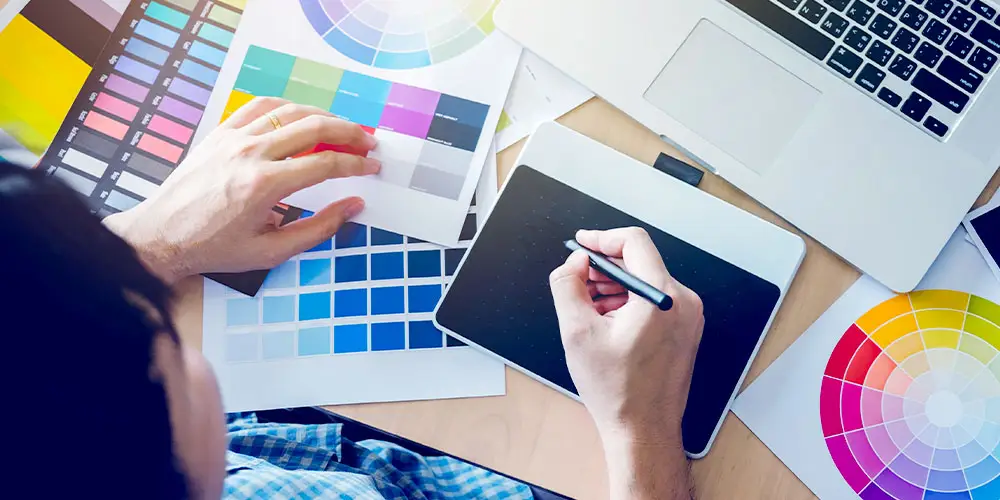Unveiling the Depths of Graphic Design: A Comprehensive Exploration
Graphic design is a multifaceted discipline that permeates every aspect of our visual world. From the logos on our clothes to the packaging on store shelves, from the websites we browse to the signage in our cities, graphic design shapes our visual experiences and influences our decisions. This extensive exploration delves into the core concepts of graphic design, its applications, the essential skills required, and the exciting career paths it offers.
The Essence of Graphic Design
Graphic design can be broadly defined as the art of communication using visual elements. It involves the strategic use of typography, imagery, color, layout, and composition to create visually appealing and informative content. Graphic designers are visual storytellers who translate ideas and messages into a language everyone can understand.
The Applications of Graphic Design
Graphic design has a vast range of applications, impacting almost every facet of our lives. Here are some key areas:
- Branding and Identity: Creating logos, brand guidelines, and visual elements that define a company’s or individual’s brand identity.
- Marketing and Advertising: Developing marketing materials like brochures, posters, social media graphics, and advertisements to capture attention and promote products or services.
- User Interface (UI) and User Experience (UX) Design: Designing the look and feel of websites and applications, ensuring they are both visually appealing and user-friendly.
- Publication Design: Creating layouts for magazines, newspapers, books, and other printed materials.
- Packaging Design: Designing packaging for products that is informative, visually stimulating, and commercially viable.
- Environmental Graphic Design: Designing signage, wayfinding systems, and visual elements within physical spaces.
- Motion Graphics: Creating animations and motion graphics for presentations, explainer videos, and other visual content.
The Essential Skills of a Graphic Designer
Successful graphic designers possess a unique blend of creative and technical skills. Here are some of the most important:
- Visual Communication: The ability to effectively translate ideas into visuals and understand how visual elements communicate with an audience.
- Software Proficiency: Mastery of design software like Adobe Photoshop, Illustrator, and InDesign is essential.
- Typography: A strong understanding of typography principles, including font selection, hierarchy, and legibility.
- Color Theory: The ability to use color effectively to evoke emotions, create harmony, and achieve specific design goals.
- Layout and Composition: A keen eye for creating balanced and visually appealing layouts.
- Problem-Solving and Critical Thinking: The ability to identify design problems and develop creative solutions.
- Communication and Collaboration: The ability to effectively communicate design ideas to clients and collaborate with other creative professionals.
The Enticing Career Paths in Graphic Design
Graphic design offers a diverse range of career paths, catering to various interests and skillsets. Here are some popular options:
- Graphic Designer: A generalist graphic designer can work in various industries, creating a wide range of visual content.
- Brand Designer: Focuses on developing and maintaining a brand’s visual identity.
- Web Designer: Creates the visual elements and user interface of websites.
- UX/UI Designer: Designs user experiences, ensuring websites and applications are not only visually appealing but also user-friendly and functional.
- Publication Designer: Lays out magazines, newspapers, books, and other printed materials.
- Packaging Designer: Creates product packaging that is informative, visually engaging, and commercially successful.
- Motion Graphics Designer: Creates animations and motion graphics for presentations, explainer videos, and other visual content.
- Art Director: Provides leadership and creative direction for a team of graphic designers.
Not All That Glitters is Gold: Dispelling Myths About Graphic Design
While graphic design offers a rewarding career path, there are some common misconceptions:
-
Myth #1: Graphic Design is Just About Making Things Pretty.
While aesthetics are important, effective graphic design goes beyond visual appeal. It’s about using visual elements to communicate a message strategically. -
Myth #2: Graphic Design Requires Only Artistic Talent. While creativity is important, successful graphic designers also possess strong technical skills, problem-solving abilities, and excellent communication skills.
-
Myth #3: Graphic Design is a High-Paying Field Right Out of School. Entry-level graphic design positions might not offer the highest salaries. However, with experience, talent, and dedication, graphic designers can command significant salaries.
FAQ
- What are the educational qualifications required to become a graphic designer?
There are several paths to becoming a graphic designer. While a bachelor’s degree in graphic design is beneficial, some graphic designers enter the field with associate degrees or strong portfolios showcasing their skills and experience.






More Stories
Where to Watch USMNT vs Jamaica National Football Team
How I Met My Monster
How Should a Ring Fit